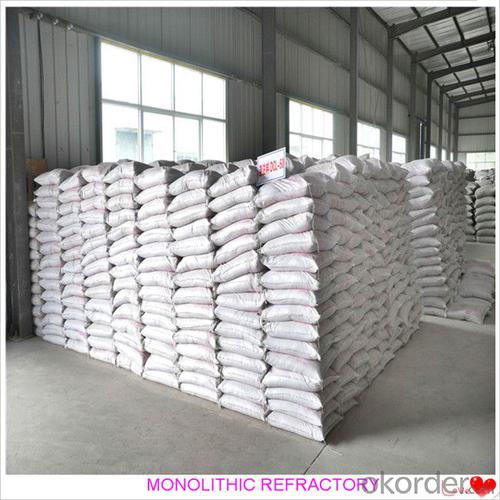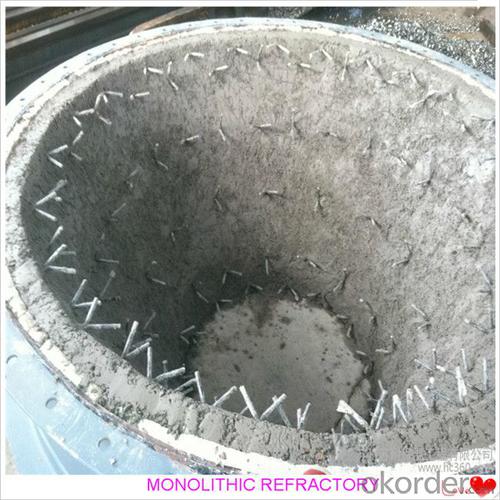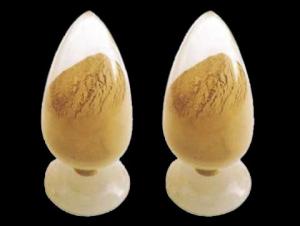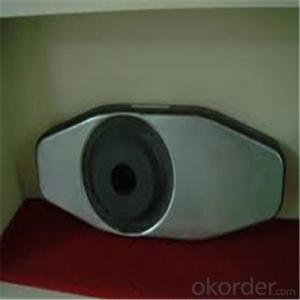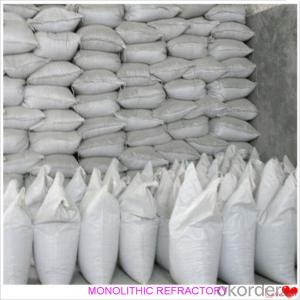Castable Cement Refractory Cement For Fireplace and Industrial Furnace
- Loading Port:
- China main port
- Payment Terms:
- TT or LC
- Min Order Qty:
- 1000 kg
- Supply Capability:
- 3000000 kg/month
OKorder Service Pledge
OKorder Financial Service
You Might Also Like
Castable Refractory for Fireplaces and Industrial Furnaces
Product Description:
Castable cement refractory is manufactured according to international standards. The product is famous for its excellent abrasion resistance and low thermal conductivity. Further, these can be provided in different specifications as required by clients. Gunning castables use high purity raw materials and additives as the main material, and are made with superfine powder adding technology.
Product Features:
The material has excellent structural stability and air tightness, and has high physical and chemical properties, and also excellent working ability. If should be used with the same material products.
Product Applications:
Widely used in various kiln linings, such as boilers, blast furnace hot blast stoves, heating furnaces, ceramic kilns, heat treatment furnaces, incinerators, re-circulating fluidized bed furnaces and chemical industry and construction industry furnaces.
Product Specifications:

Product Images:

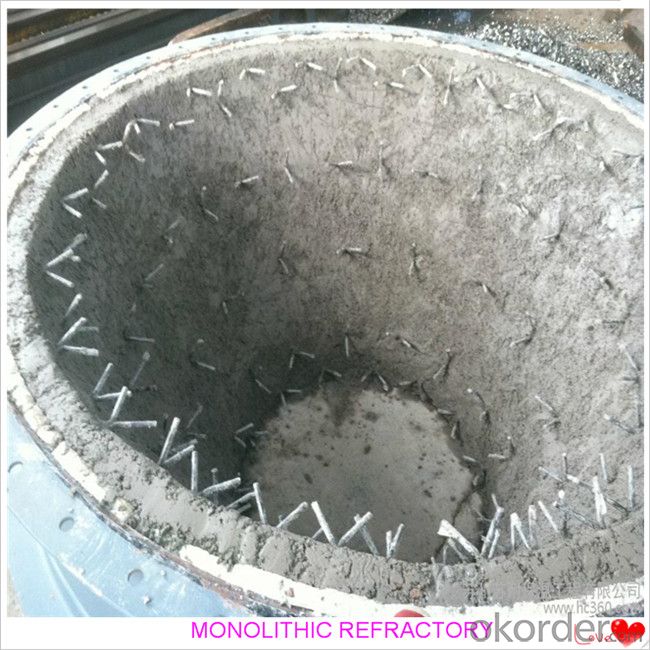


FAQ:
Q1: Why buy Materials & Equipment from OKorder.com?
A1: All products offered by OKorder.com are carefully selected from China's most reliable manufacturing enterprises. Through its ISO certifications, OKorder.com adheres to the highest standards and a commitment to supply chain safety and customer satisfaction.
Q2: How do we guarantee the quality of our products?
A2: We have established an advanced quality management system which conducts strict quality tests at every step, from raw materials to the final product. At the same time, we provide extensive follow-up service assurances as required.
- Q: How do monolithic refractories contribute to energy efficiency in iron and steel production?
- Monolithic refractories play a crucial role in enhancing energy efficiency in iron and steel production processes. These refractories are unshaped materials that are used to line the various components of furnaces, kilns, and other high-temperature equipment involved in the production of iron and steel. One way monolithic refractories contribute to energy efficiency is by providing excellent insulation. These materials have low thermal conductivity, which means they effectively reduce heat transfer from the furnace or kiln to the surrounding environment. By minimizing heat loss, monolithic refractories help maintain high temperatures within the production units, which in turn reduces the energy required to sustain the desired operating conditions. Furthermore, monolithic refractories offer superior resistance to thermal shock and wear, ensuring the longevity of the lining materials. This durability reduces the need for frequent repairs and replacements, leading to less downtime and increased operational efficiency. As a result, energy is conserved since the production units can continuously operate at optimal temperatures without interruptions. In addition, monolithic refractories have excellent resistance to chemical reactions, corrosion, and erosion caused by molten metals and slag. This resistance reduces the formation of cracks and defects in the lining, which can compromise the insulation and increase heat loss. By maintaining a robust and intact lining, monolithic refractories contribute to energy efficiency by minimizing heat escape and ensuring the efficient utilization of energy for the iron and steel production processes. Moreover, the use of monolithic refractories allows for design flexibility in the construction of furnaces and kilns. Their ability to be shaped and applied in various configurations enables the creation of optimized lining structures that enhance heat transfer and combustion efficiency. This flexibility empowers engineers and operators to design and modify the production units to maximize energy efficiency and minimize energy wastage. Overall, monolithic refractories contribute significantly to energy efficiency in iron and steel production by providing excellent insulation, durability, resistance to thermal and chemical degradation, and design flexibility. By reducing heat loss, minimizing repairs and replacements, and optimizing heat transfer, these refractories play a vital role in conserving energy and improving the overall sustainability of the iron and steel industry.
- Q: How do monolithic refractories resist chemical corrosion in iron and steel applications?
- Monolithic refractories are highly resistant to chemical corrosion in iron and steel applications due to their unique characteristics and composition. These refractories are engineered with a combination of different materials such as aggregates, binders, and additives, which provide them with exceptional resistance to chemical attack. One key factor that contributes to their resistance is the use of high-quality raw materials. Monolithic refractories are typically made from high-alumina or alumina-silica aggregates, which have excellent resistance to chemical reactions. These aggregates are carefully selected to ensure they can withstand the harsh conditions encountered in iron and steel applications, including exposure to molten metal, slag, and various chemical compounds. Moreover, the binders used in monolithic refractories play a crucial role in their resistance to chemical corrosion. Common binders include clay, calcium aluminate cement, or colloidal silica. These binders help to hold the refractory materials together and provide additional protection against chemical attack. They form a dense and impermeable structure, which prevents corrosive substances from penetrating the refractory lining. Furthermore, monolithic refractories often incorporate additives that enhance their chemical resistance. These additives can include antioxidants, anti-spalling agents, and various other compounds that further protect the refractory lining from chemical attack. These additives help to neutralize corrosive elements, inhibit the formation of harmful compounds, and reduce the overall corrosion rate. Additionally, the unique installation method of monolithic refractories also contributes to their resistance to chemical corrosion. Unlike traditional brick refractories, monolithic refractories are installed as a single, continuous lining. This eliminates the need for joints or gaps that could potentially serve as weak points for chemical penetration. The monolithic nature of these refractories ensures a tight and seamless lining, reducing the vulnerability to chemical attack. Overall, the combination of high-quality raw materials, effective binders, and beneficial additives, along with the monolithic installation technique, grants monolithic refractories exceptional resistance to chemical corrosion in iron and steel applications. This resistance allows them to withstand the harsh conditions encountered in these industries, ensuring the longevity and efficiency of the refractory lining.
- Q: How do monolithic refractories resist corrosion from molten metals?
- Due to their unique composition and structural properties, monolithic refractories have the ability to resist corrosion caused by molten metals. Typically made from a single material like alumina, magnesia, or silica, these refractories are specifically designed to withstand harsh chemical environments and high temperatures. A significant contributing factor to their corrosion resistance is their dense and compact structure. Through a specialized manufacturing process, monolithic refractories are created with a tightly bonded material that has minimal porosity. This low porosity prevents molten metals from penetrating the refractory and causing damage. Moreover, monolithic refractories often incorporate additives or binders to enhance their resistance to corrosion. These additives, such as silicon carbide, zirconia, or other chemically stable materials, can endure the corrosive effects of molten metals. Additionally, monolithic refractories possess excellent thermal shock resistance. This means that they can endure sudden temperature changes without cracking or spalling. When in contact with molten metals, the refractory's ability to handle thermal shock prevents the formation of cracks or fractures, which would allow further penetration of the corrosive molten metal. In conclusion, the combination of a dense structure, chemical additives, and high thermal shock resistance enables monolithic refractories to effectively resist corrosion caused by molten metals. These refractories find extensive use in various industrial applications, including steelmaking, foundries, and non-ferrous metal processing, where they offer reliable and durable protection against corrosion.
- Q: What are the environmental considerations associated with monolithic refractories?
- Monolithic refractories, utilized in various high-temperature applications, pose several environmental concerns that must be taken into account. Firstly, the production of monolithic refractories necessitates the utilization of raw materials such as clay, silica, and alumina, which are frequently extracted from the earth, resulting in habitat destruction, soil erosion, and water pollution. Furthermore, the manufacturing process of monolithic refractories commonly involves considerable energy consumption and the emission of greenhouse gases. The firing of refractory materials necessitates high temperatures, often achieved through the combustion of fossil fuels, contributing to carbon dioxide emissions and climate change. These emissions have broad environmental consequences, including air pollution, acid rain, and ozone layer depletion. Additionally, the disposal of monolithic refractories at the end of their useful life can present environmental challenges. Although monolithic refractories are highly durable and long-lasting, there may come a time when replacement or repair is necessary. The disposal of refractory waste can be problematic as it often contains hazardous substances such as chromium, lead, and asbestos. Inadequate disposal methods can lead to contamination of soil and water, posing risks to both human health and the environment. To address these environmental concerns, efforts are underway to develop more sustainable refractory materials and manufacturing processes. For instance, alternative raw materials like recycled refractory materials or industrial by-products can be employed to decrease the environmental impact of mining. Moreover, the adoption of more energy-efficient manufacturing techniques, such as utilizing renewable energy sources or implementing advanced firing technologies, can help minimize greenhouse gas emissions. In conclusion, the environmental considerations associated with monolithic refractories encompass habitat destruction, energy consumption, greenhouse gas emissions, and waste disposal. Prioritizing sustainability and implementing measures to mitigate these environmental impacts, such as using alternative raw materials, enhancing manufacturing processes, and endorsing responsible waste management practices, are imperative for the refractory industry.
- Q: What are the considerations for selecting monolithic refractories for ladles and tundishes?
- When it comes to choosing monolithic refractories for ladles and tundishes, there are a number of important factors to bear in mind. Firstly, it is crucial to select monolithic refractories that can withstand and maintain their strength and integrity at the extremely high temperatures experienced during metal casting processes. In addition, monolithic refractories with good thermal shock resistance are essential, as ladles and tundishes are subjected to rapid temperature changes during pouring and cooling. Such refractories can prevent cracking and spalling, ensuring the longevity and performance of these components. Erosion and corrosion resistance is another key consideration. Refractory linings can be eroded and chemically attacked by molten metal, slag, and other corrosive substances. Opting for monolithic refractories with excellent erosion and corrosion resistance can extend the service life of ladles and tundishes, reducing the need for maintenance and minimizing downtime. Mechanical strength is also important, as ladles and tundishes are frequently handled, transported, and subjected to mechanical stresses. Monolithic refractories with adequate mechanical strength can withstand these forces without cracking or breaking, thereby maintaining the structural integrity of these components. The method of applying monolithic refractories is another factor to think about. Depending on the size and shape of the ladles and tundishes, as well as the available equipment and expertise, different application methods such as gunning, casting, ramming, or spraying may be used. It is important to ensure that the selected monolithic refractories are compatible with the chosen application method. The thermal conductivity of monolithic refractories can impact heat transfer in ladles and tundishes. Opting for refractories with low thermal conductivity can help minimize heat loss and improve energy efficiency. While performance and durability are crucial, it is also important to consider the cost-effectiveness of the chosen monolithic refractories. This includes factors such as the initial cost of the refractories, installation and maintenance costs, and the expected service life. Striking a balance between performance and cost can help optimize the overall investment in ladles and tundishes. Overall, the selection of monolithic refractories for ladles and tundishes involves a combination of factors, including temperature resistance, thermal shock resistance, erosion and corrosion resistance, mechanical strength, application method compatibility, thermal conductivity, and cost-effectiveness. By carefully evaluating these factors, it is possible to choose the most suitable monolithic refractories that meet the specific requirements of ladles and tundishes in metal casting processes.
- Q: What are the recommended curing and drying procedures for monolithic refractories?
- The recommended curing and drying procedures for monolithic refractories depend on the specific type and composition of the refractory material. However, there are some general guidelines that can be followed. Curing refers to the process of allowing the refractory material to set and harden. This is typically done by exposing the material to a controlled temperature and humidity environment. The curing process helps to develop the desired physical and chemical properties of the refractory, such as strength and resistance to thermal shock. Drying, on the other hand, refers to the removal of moisture from the refractory material. This is important because moisture can cause the refractory to crack or spall when exposed to high temperatures. Drying is typically done after the curing process. The curing and drying procedures for monolithic refractories often involve the following steps: 1. Preheating: Before applying the refractory material, it is important to preheat the surface to which it will be applied. This helps to prevent rapid moisture evaporation and ensures good adhesion of the refractory. 2. Mixing and application: The refractory material should be mixed according to the manufacturer's instructions and applied to the desired surface using appropriate techniques such as gunning, casting, or ramming. 3. Initial curing: After application, the refractory should be allowed to cure at a controlled temperature and humidity for a specific duration. This allows the material to set and develop its strength. The curing temperature and duration may vary depending on the specific refractory material, but it is typically recommended to start with a lower temperature and gradually increase it over time. 4. Drying: Once the initial curing is complete, the refractory should be dried to remove any remaining moisture. This is typically done by gradually increasing the temperature in a controlled manner. The drying temperature and duration may vary depending on the specific refractory material, but it is important to avoid rapid temperature changes to prevent thermal stress and cracking. 5. Final curing: After drying, the refractory should be allowed to cool down gradually to room temperature. This final curing step helps to further develop the refractory's strength and stability. It is crucial to follow the manufacturer's guidelines and recommendations for the specific refractory material being used, as different materials may have different curing and drying requirements. Additionally, factors such as the size and shape of the refractory installation, as well as the surrounding environment, may also influence the curing and drying procedures. Consulting with a refractory specialist or manufacturer is always recommended to ensure the proper curing and drying procedures are followed for optimal performance and longevity of the monolithic refractories.
- Q: What are the recommended curing times for monolithic refractories?
- The recommended curing times for monolithic refractories can vary depending on the specific type of refractory and its application. However, in general, it is important to follow the manufacturer's guidelines for curing times to ensure the proper setting and development of the refractory material. For conventional castable refractories, a typical curing time can range from 24 to 48 hours. During this period, it is essential to control the temperature and humidity conditions to allow for the hydration and hardening of the castable. This curing time is crucial to achieve the desired strength and durability of the refractory lining. On the other hand, low cement or ultra-low cement castables may require a longer curing time due to their reduced water content. These refractories often need a curing period of 48 to 72 hours to allow for proper bonding and solidification. For gunning mixes or shotcrete applications, the curing time might be shorter, usually around 8 to 12 hours. This faster curing process is facilitated by the addition of accelerators to the mix, which promote rapid setting and hardening. It is important to note that these recommended curing times are just general guidelines, and specific recommendations may vary depending on factors such as ambient temperature, humidity, and the specific refractory material being used. Therefore, it is always advisable to consult the manufacturer's instructions or seek guidance from a refractory specialist to ensure optimal curing and performance of the monolithic refractory.
- Q: How do monolithic refractories improve energy efficiency in the iron and steel industry?
- Monolithic refractories improve energy efficiency in the iron and steel industry by providing better insulation and reducing heat loss. They have lower thermal conductivity compared to traditional refractory bricks, which means less heat is conducted through the lining of the furnaces or kilns. This leads to reduced energy consumption and improved thermal efficiency. Additionally, monolithic refractories offer better resistance to thermal shock, minimizing the need for frequent repairs or replacements, thereby saving energy and reducing downtime.
- Q: What are the key properties of pumpable refractories used for monolithic refractory applications?
- The key properties of pumpable refractories used for monolithic refractory applications include high flowability, good workability, excellent bonding strength, and high resistance to thermal shock. These pumpable refractories should also possess good pumpability and be able to withstand the intense heat and mechanical stress in the application environment. Additionally, they should have low water demand, high chemical resistance, and the ability to maintain their properties even after exposure to high temperatures.
- Q: What are the factors affecting the lifespan of monolithic refractories?
- The lifespan of monolithic refractories can be significantly affected by several factors. 1. Operating temperature is a critical factor. While monolithic refractories are designed to withstand high temperatures, prolonged exposure to extreme temperatures can cause thermal shock and lead to premature failure. 2. Thermal cycling, which refers to frequent temperature fluctuations, can also shorten the lifespan of monolithic refractories. The refractory material expands and contracts, creating stress that can result in cracking and degradation over time. 3. The chemical environment where the monolithic refractories are used plays a crucial role in their lifespan. Exposure to corrosive gases, acids, alkalis, or molten metals can cause chemical reactions that degrade the refractory material. 4. Mechanical stress, such as abrasion, impact, and vibration, can weaken monolithic refractories and reduce their lifespan. This is particularly important in industries with high mechanical activity, such as steelmaking or cement production. 5. Proper installation and regular maintenance are essential for maximizing the lifespan of monolithic refractories. Inadequate installation techniques or neglecting maintenance can result in weak joints, inadequate anchoring, or the growth of cracks, leading to premature failure. 6. The quality and composition of the monolithic refractory material greatly impact its lifespan. Higher-quality materials with better resistance to temperature, chemical attacks, and mechanical stress tend to have longer lifespans. 7. The design of the refractory lining and its engineering considerations, such as thickness, shape, and reinforcement, also influence the lifespan of monolithic refractories. A proper design can distribute stress more evenly, reduce thermal gradients, and improve overall performance and durability. 8. The way monolithic refractories are operated and handled can affect their lifespan. Factors such as rapid temperature changes, improper cooling or heating procedures, or excessive thermal cycling can all contribute to premature failure. In conclusion, various factors such as temperature, thermal cycling, chemical environment, mechanical stress, installation and maintenance practices, quality of refractory material, design and engineering considerations, and operating conditions all impact the lifespan of monolithic refractories. Proper management and consideration of these factors are essential for maximizing their lifespan.
Send your message to us
Castable Cement Refractory Cement For Fireplace and Industrial Furnace
- Loading Port:
- China main port
- Payment Terms:
- TT or LC
- Min Order Qty:
- 1000 kg
- Supply Capability:
- 3000000 kg/month
OKorder Service Pledge
OKorder Financial Service
Similar products
Hot products
Hot Searches
Related keywords






